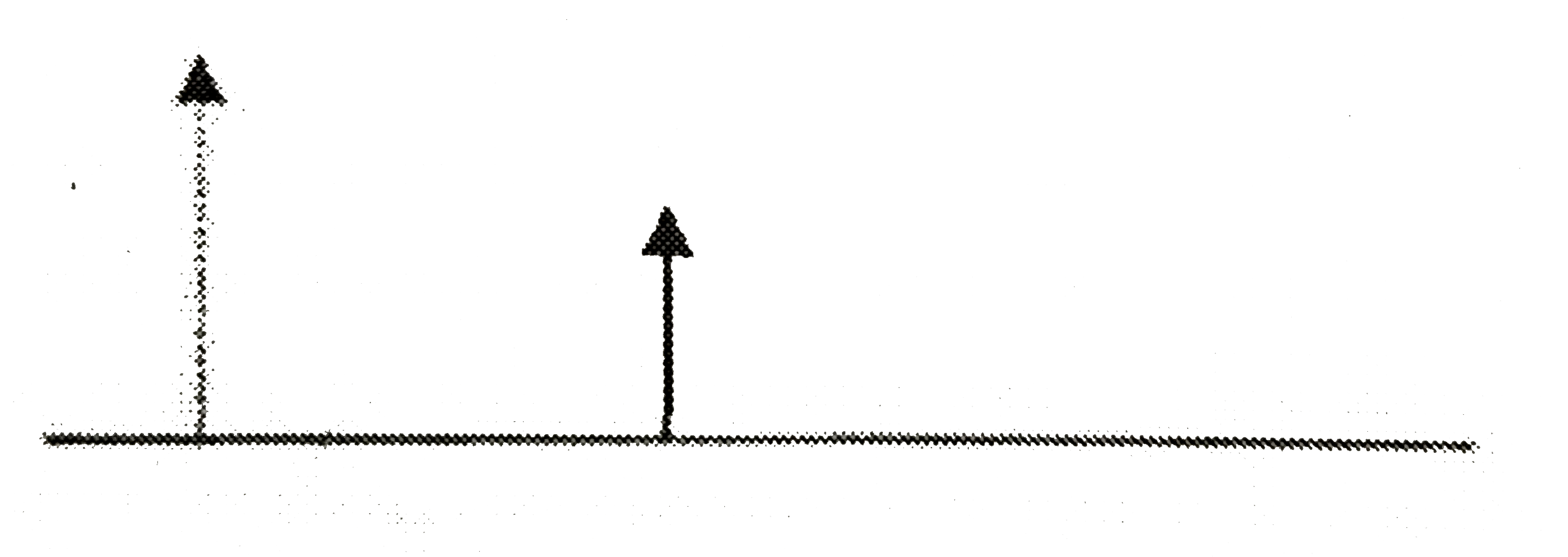An object and its image are as shown in the diagram below. If the object image distance is 4 cm and the magnification is 3, find type of the lens used and ratio u:v:f. Draw the ray diagram to show the position of the lens and the principal focil.

(i) As the magnification in more than 1, lens must be convex lens.
(ii) Magnification m=vu (1)
v = u + d
where 'd' is the distance between the image and the object.
Substitude the values of v in (1) and determins the values of u and v by using (1).
Now the focal length 'f' may be determined as ltBrgt f=uv(u−v)
Find the ratio of u, v and f .
2:6:3
Topper's Solved these Questions
Similar Questions

An object and the image obtained from the lens are as given above.
If the distance between the object and the image is 36 cm and the magnification is -2, find the focal length of the lens and draw the ray diagram to show the position of the lens.
View SolutionA lens produces a virtual image between the object and the lens.
Draw a ray diagram to show the formation of this image.
View SolutionAn object is placed in front of a converging lens at a distance greater than twice the focal length of the lens. Draw a ray diagram to show the formation of the image.
View SolutionDraw the ray diagram for an object located at 2F for a convex lens and write the nature of image.
View SolutionIt is desired to obtain an erect image of an object, using concave mirror of focal length of 12 cm.
(i) What should be the range of distance of an object placed in front of mirror ?
(ii) Will the image be smaller or large than the object ? Draw a ray diagram to show the formation of image in this case.
(iii) Where will the image of this object be, if it is placed 24 cm in front of the mirror ? Draw a ray diagram for this situation also to justify your answer.
Show the positions of the pole, the principal focus and the centre of curvature in the above ray diagrams.
View SolutionIt is desired to obtain an erect image of an object, using concave mirror of focal length of 12 cm.
(i) What should be the range of distance of an object placed in front of mirror ?
(ii) Will the image be smaller or large than the object ? Draw a ray diagram to show the formation of image in this case.
(iii) Where will the image of this object be, if it is placed 24 cm in front of the mirror ? Draw a ray diagram for this situation also to justify your answer.
Show the positions of the pole, the principal focus and the centre of curvature in the above ray diagrams.
View SolutionAn object placed 4 cm in front of a converging lens produces a real image 12 cm from the lens.
a) What is the magnification of the image?
b) What is the focal length of the lens?
Draw a ray diagram to show the formation of image. Mark clearly F and 2F in the diagram.
View SolutionA linear object is placed on the axis of a lens. An image is formed by refraction in the lens. For all positions of the object on the axis of the lens, the positions of the image are always between the lens and the object.
(i) Name the lens.
(ii) Draw a ray diagram to show the formation of the image of an object placed in front of the lens at any position of your choice except infinity.
View SolutionDraw ray diagram showing the image formation by a convex lens when an object is placed at twice the focal length of the lens.
View SolutionThe image of an object formed by a lens is real, inverted and of the same size as the object. If the image is at a distance of 40 cm from the lens, what is the nature and power of the lens? Draw ray diagram to justify your answer.
View Solution
